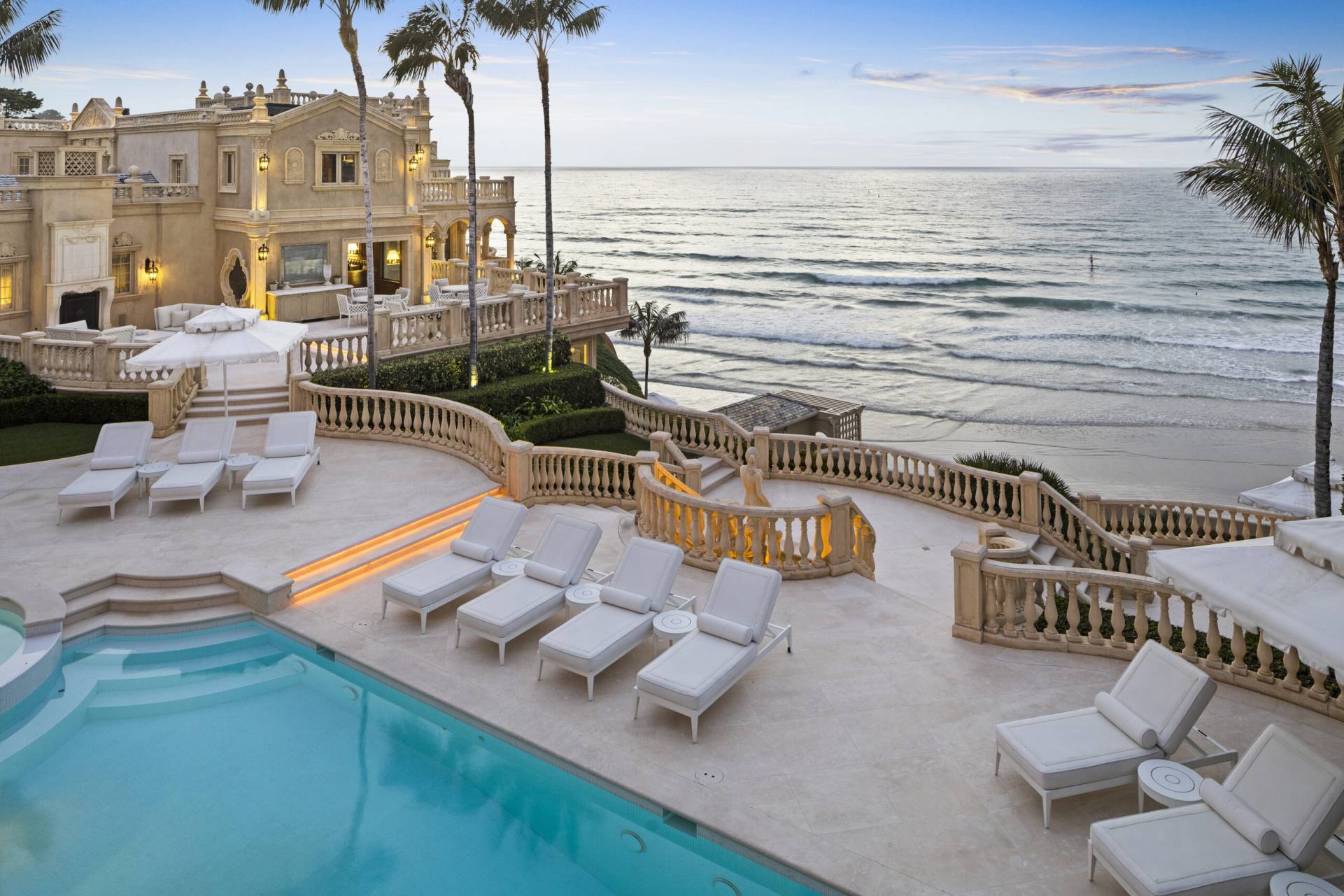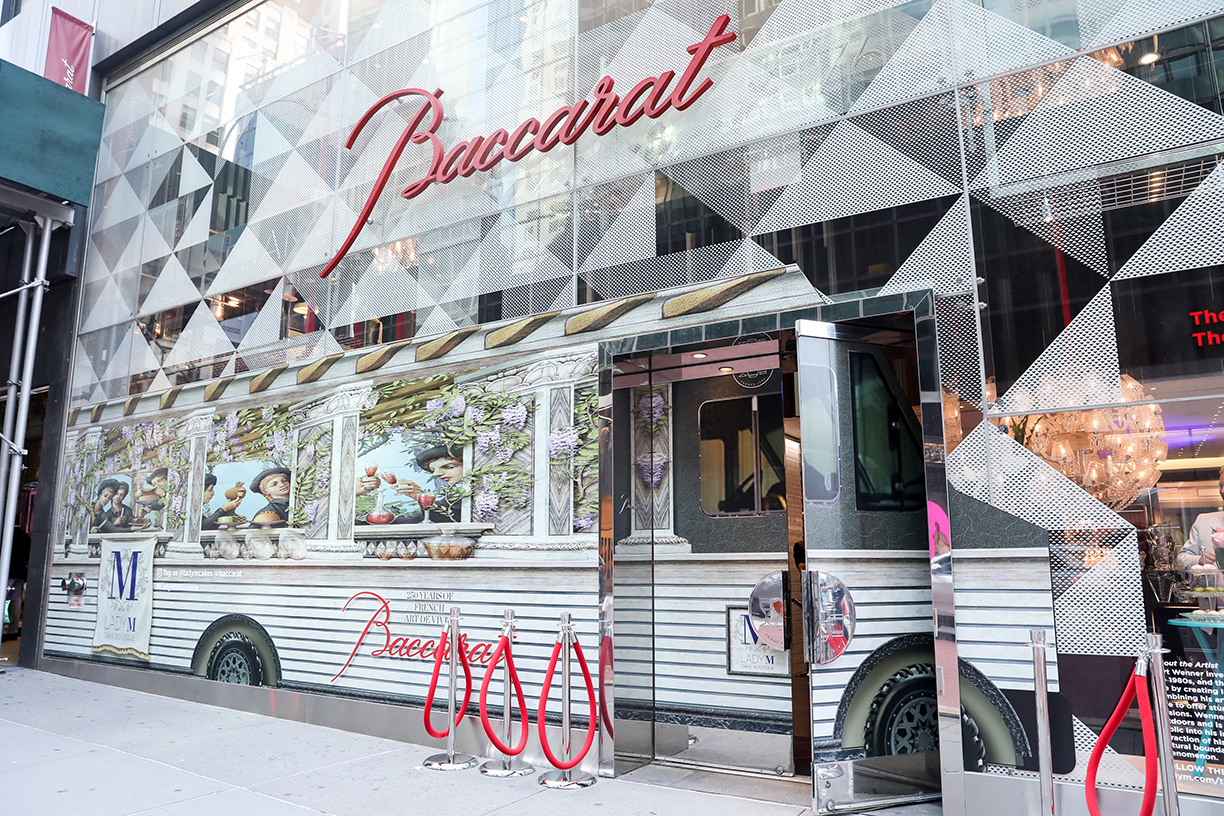
Lady M Cake Boutique, known for elegant, multi-layered Mille Crêpes cakes, has partnered with French luxury brand Baccarat to launch its first luxury cake truck in California.
Alongside 3D Artist Kurt Wenner, the five-year partnership will launch the cake truck in New York City at the Baccarat Boutique on Madison Avenue, and travel across the country before commencing operation in California. Set to start serving August 2019 in Northern California, the 28-foot multi-functional luxury cake truck will journey throughout California greeting new and existing clients of both brands with a unique cake experience.
“Baccarat is thrilled to be partnering with Lady M on this new and innovative collaboration,” says Jim Shreve, President and CEO of Baccarat North America. “Our partnership reinforces the Baccarat message of enjoying beautiful things every day. We are excited to share delicious cakes on beautiful Baccarat. Everything tastes better on Baccarat.”
From the sidewalk, pedestrians and guests will experience the Kurt Wenner 3D, life-sized rendering of the cake truck that will be affixed to the boutique’s glass façade. Inside, guests will meander through the boutique surrounded by Lady M cakes, capturing the feel of being in an actual Lady M boutique. Within the boutique, guests will be greeted with a glass of champagne as they approach yet another version of the cake truck, where Lady M Mille Crêpes will be served through a functional service window.
The Lady M x Baccarat cake truck is a stunning and luxurious feast for the eyes. On the exterior, Baccarat has mounted two large Tuile de Crystal Chandeliers ($29,100 each) and 1 small Tuile de Crystal ($12,600) that will gracefully hang suspended from two long beams that are collapsible when the food truck is not in service. Four Baccarat Mille Nuits Torch sconces ($2,150 each) will mount on either side of the service windows. During the day, Lady M will provide legendary service to clients who pre-order cakes. During the evening, Lady M and Baccarat will illuminate the night and create an outdoor dining experience for those who want to experience both brands.
“The collaboration with Lady M and Baccarat has allowed me to have an entirely new experience with interactive art. Placing my art on a food truck is a first for me,” says artist Kurt Wenner, who invented 3D Pavement Art in the 1980s. By combining his art with digital printing, Wenner offers stunning, durable, interactive illusions.
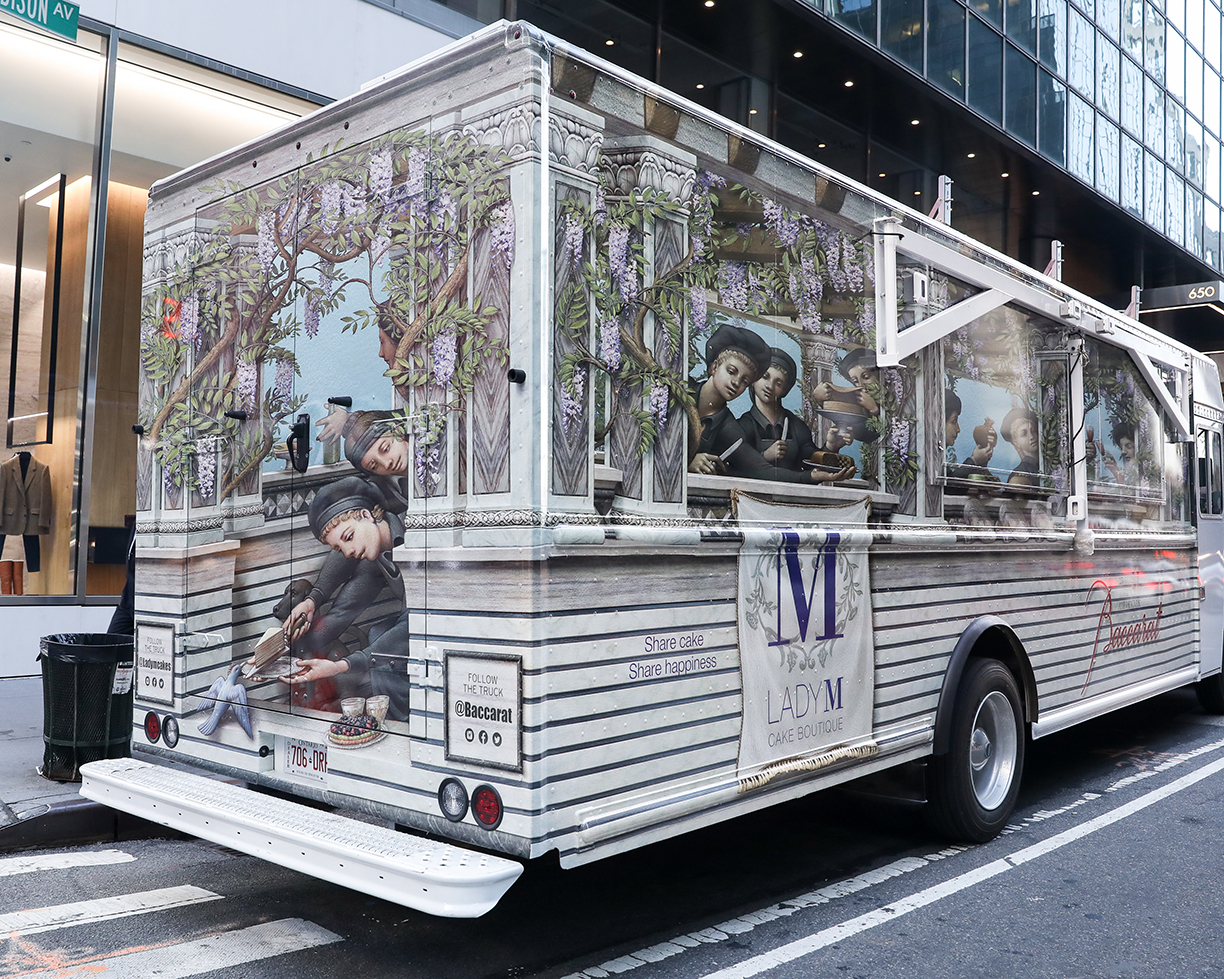
This collaboration is the first of its kind, and Lady M Cake Boutique is thrilled and honored to partner with Baccarat. We are excited to expand the concept of the Lady M experience and take our cakes (including a new confection made exclusively for the collaboration), on the road, introducing them to those both new to and familiar with the brand. We look forward to sharing our signature cakes on beautiful crystal, and sharing happiness.
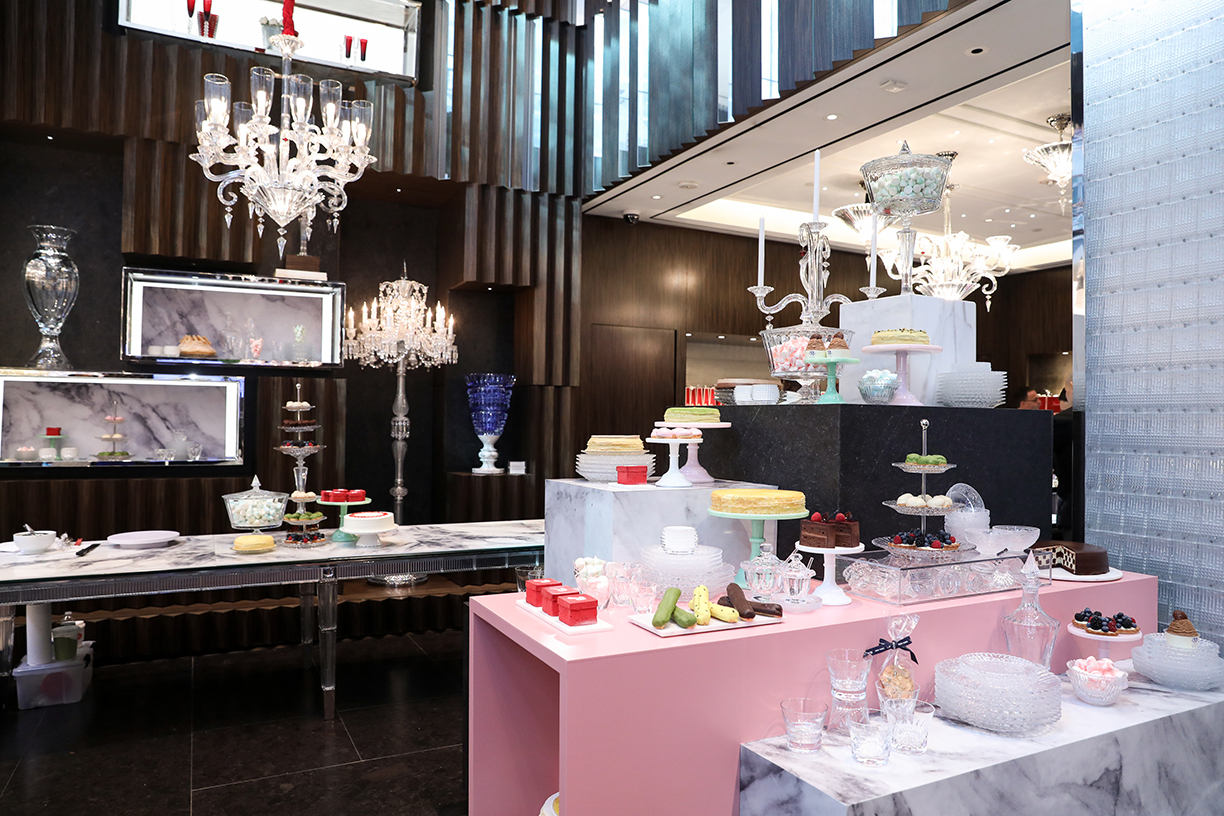
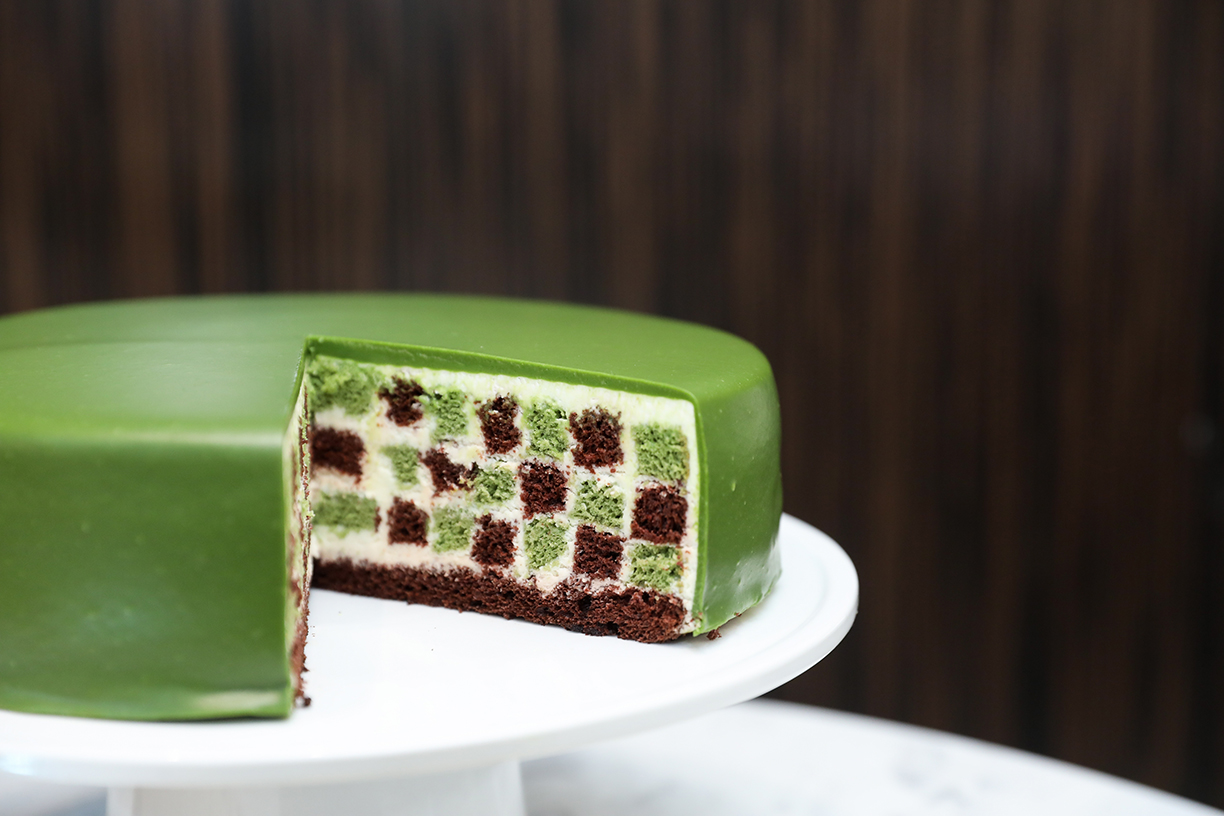
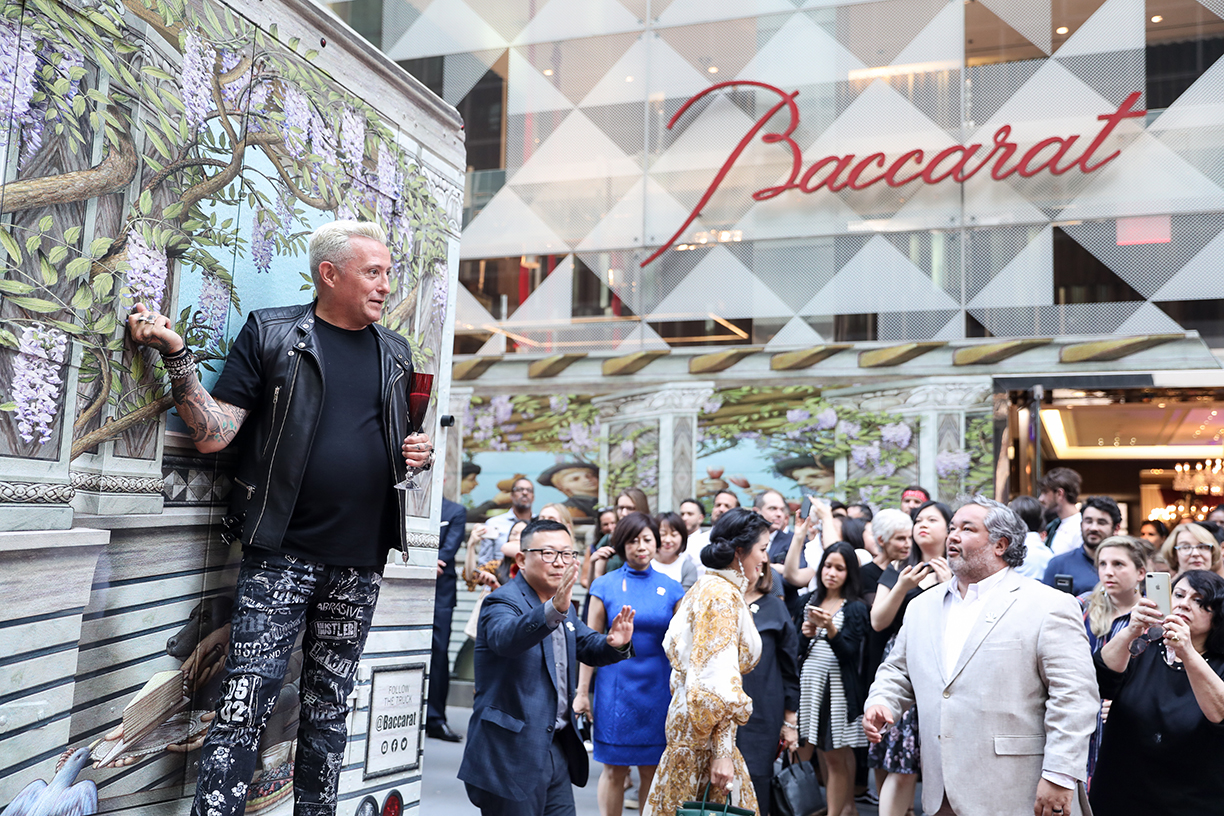
“My 3D illusions are where the language of proportion and innovation meet. I’m so excited about this project as the illusions I have created will be partnered with elegant chandeliers and the world’s finest cakes. The marriage of all three will shift the perception of what is reality,” says Wenner.
The cake truck will start service starting this month in Northern California, and guests are encouraged to tag and follow along with the hashtag #ladymxbaccarat. A microsite tracking the cake truck’s journey throughout California will be live at www.ladym.com/thecaketruck.
All photos courtesy Samantha Nandez / BFA.com
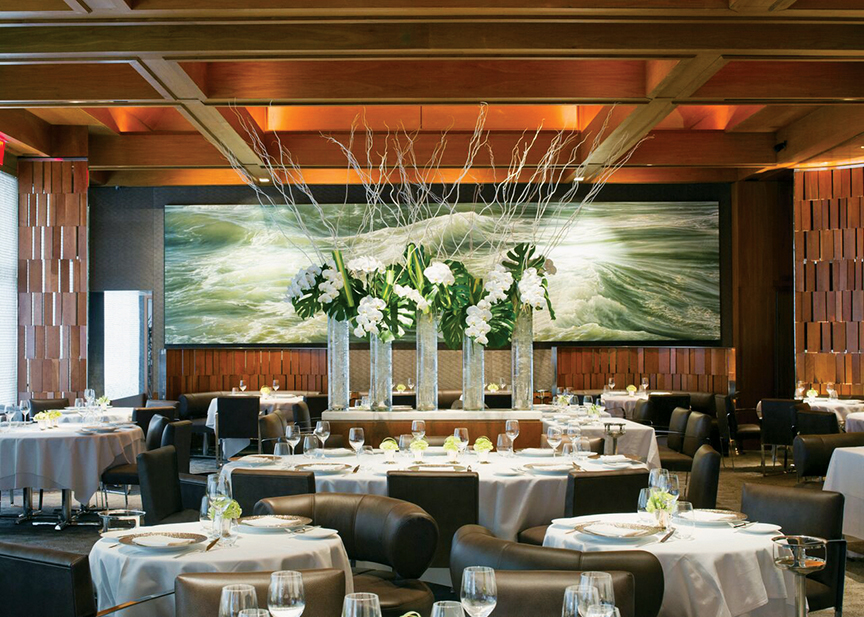
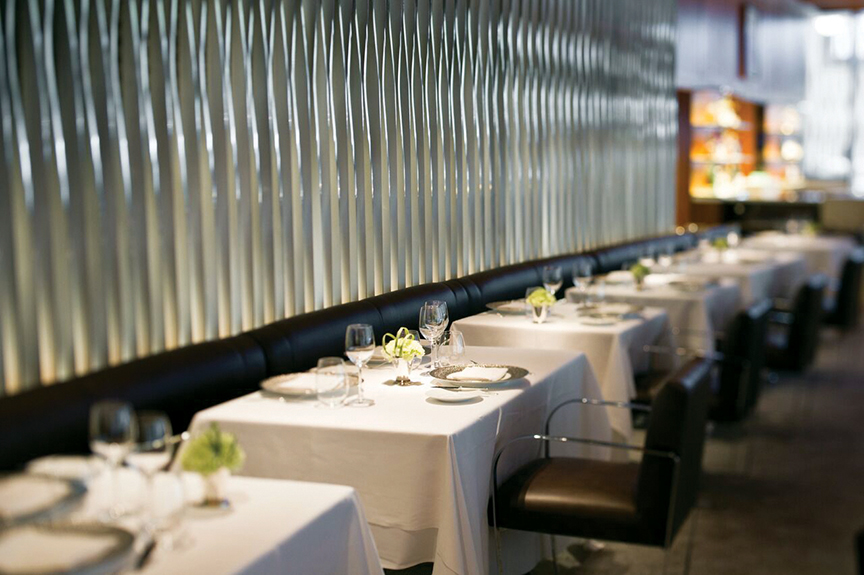
Photos courtesy of Le Bernadin
Overall, Americans are shunning haute cuisine, but for elite diners there remain plenty of opportunities for conspicuous consumption.
By Roger Grody
Generally, “fine dining” — typically evidenced by crisp white tablecloths, crystal stemware and formal service — is rapidly disappearing in America. However, for those restaurants that stubbornly adhere to tradition and insist on genuine luxury, the experience is elevated … along with the price.
Charlie Trotter, the renowned Chicago chef who died in his prime, insisted that fine dining actually represents good value, citing the superb ingredients and intensive labor (100 people from farmers to servers) that contribute to a world-class meal. Average Americans cannot afford mansions or yachts, but many can occasionally experience the world’s finest cuisine. The restaurants featured herein honor Trotter’s philosophy, with some pushing his principle to its limits.
Le Bernardin is one of New York’s temples of gastronomy, where chef/partner Éric Ripert has earned acclaim for fresh, seasonable seafood enhanced through sophisticated French technique. With options between $170 and $225 per person, the prix fixe menus at Le Bernardin are actually restrained for a Michelin three-star restaurant, but a couple can drop a bundle once caviar and wine are added.
“Luxurious service no longer equates to the stiff environment with formulaic interactions that was once popular,” reports Ripert, and while Le Bernardin has pioneered a more approachable experience, the chef/restaurateur still values tradition. “We continue to be a destination for special occasions, which is a large part of why we uphold some of our more classical dining requirements, such as gentleman wearing jackets,” he says. Allowing guests to visit the kitchen and take photographs with staff might not have been something his mentor Joël Robuchon would have encouraged decades ago, but Ripert views it as part of the evolution of fine dining.
While French cooking has the reputation for being the most expensive, it is Japanese cuisine — particularly the art of sushi — that is the priciest in America today. Discretely tucked into a diminutive space on Beverly Hills’ Rodeo Drive is Urasawa, whose entire seating is essentially comprised of just eight chairs at a sushi bar. There, for a flat fee of $425 per person (before tax, tip or a drop of sake), sushi chef Hiroyuki Urasawa personally pampers guests with an omakase (chef’s choice) meal in which extraordinary ingredients are matched by artistry on the plate.
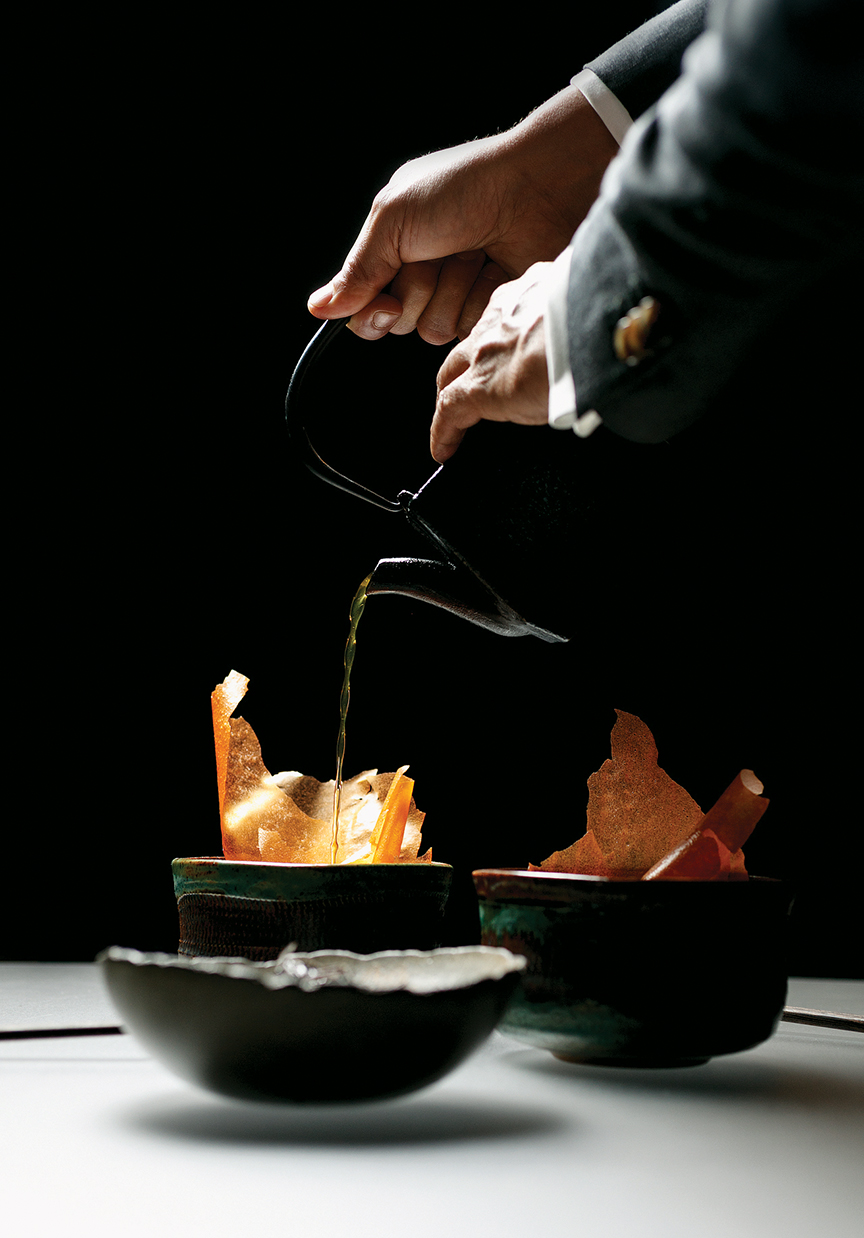
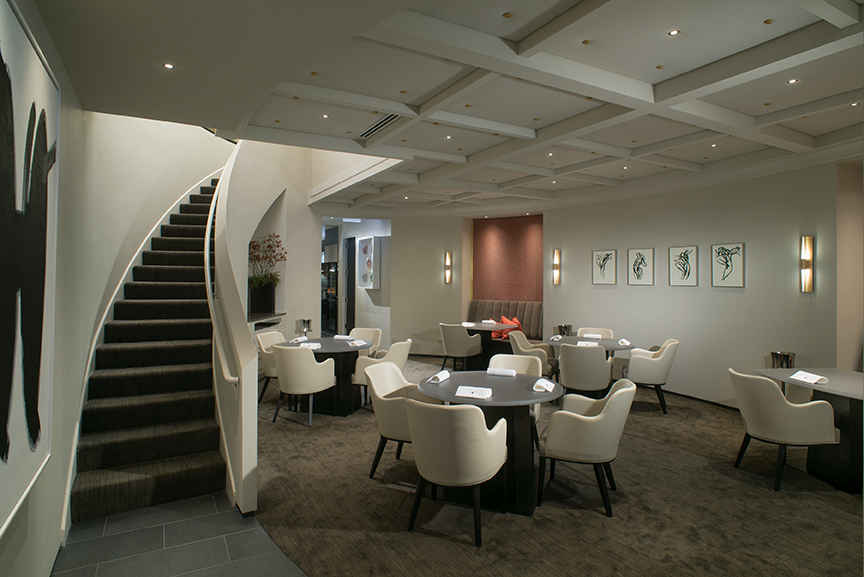
Photos by Allen Hemberger, interior by Matthew Gilson
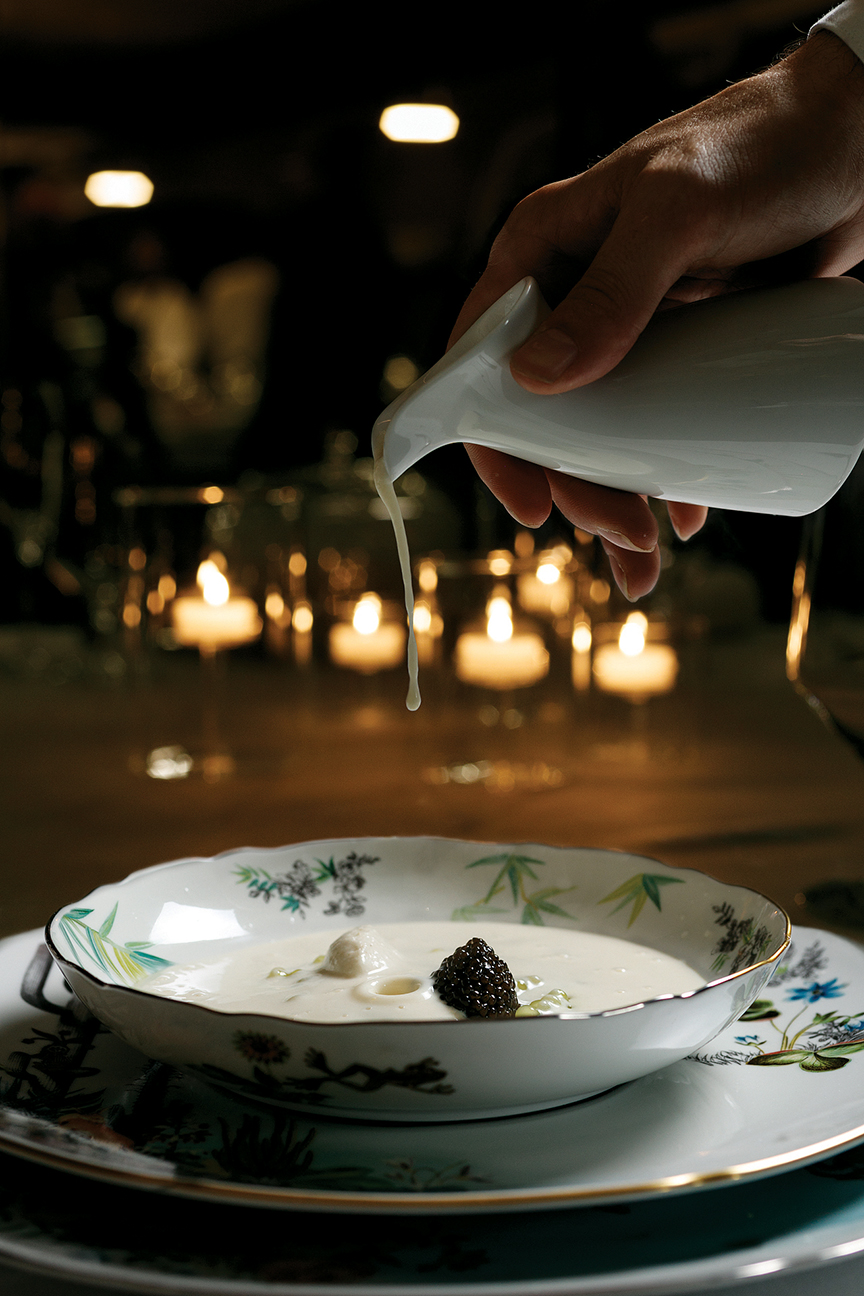
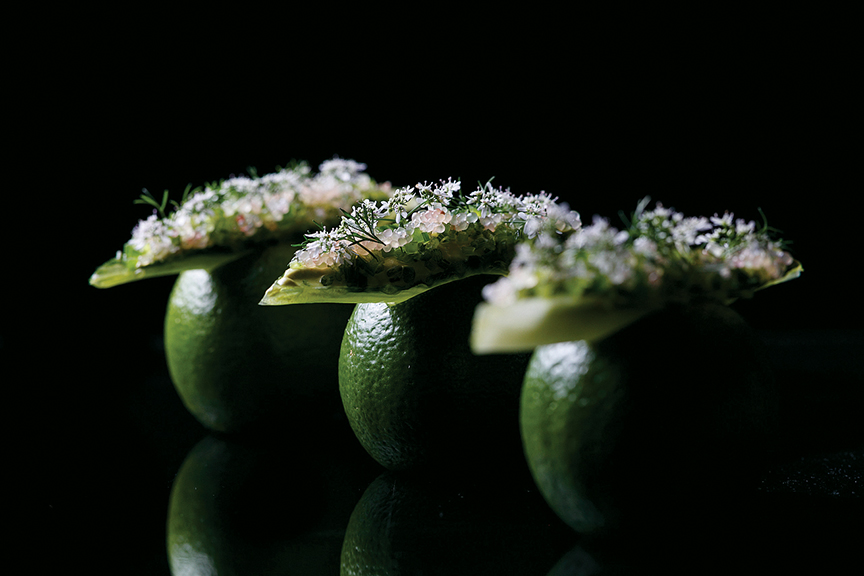
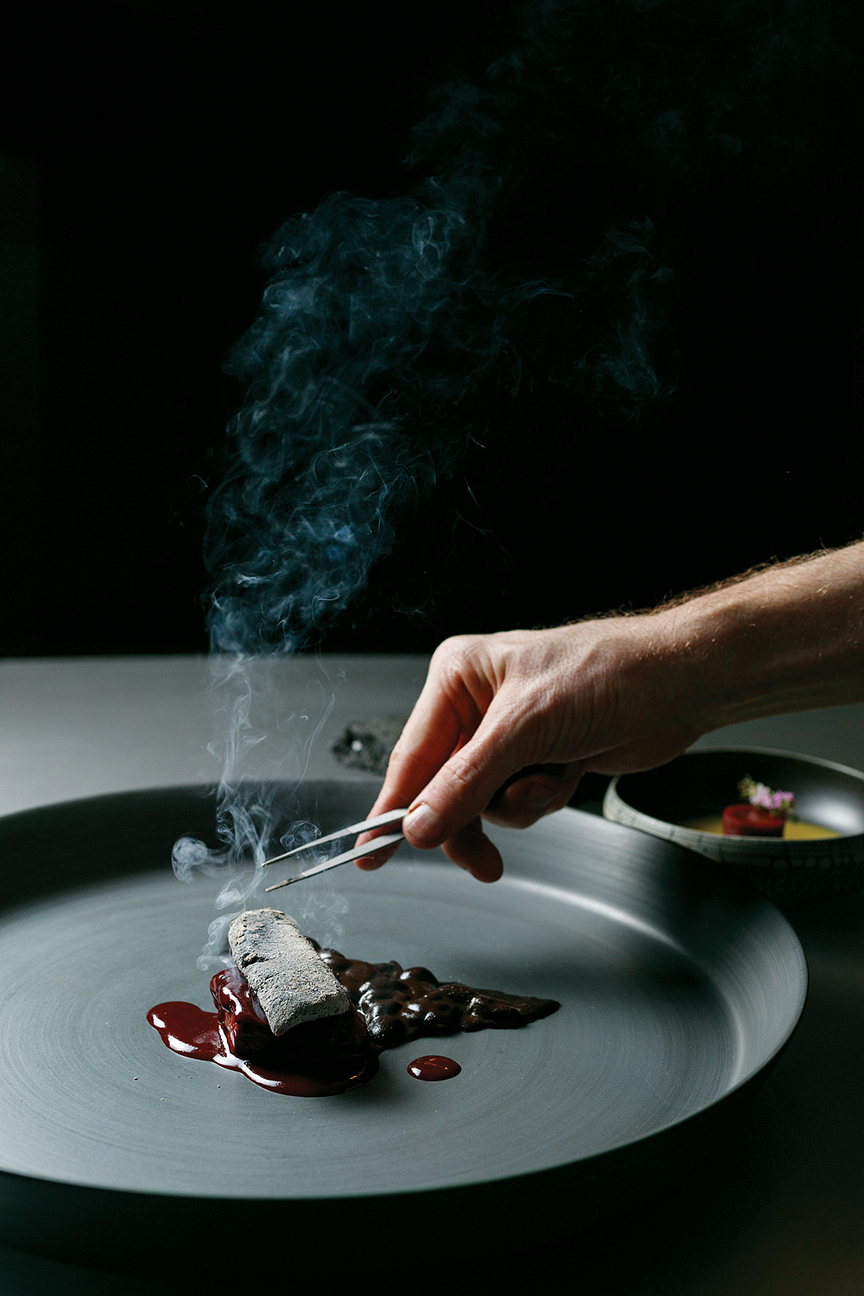
Urasawa-san is a protégé of sushi chef Masayoshi “Masa” Takayama, whose own restaurant previously occupied that same Beverly Hills space. When Takayama was lured to New York to open his 26-seat Masa at Time Warner Center, the prices went up and are now $595 per person, although gratuities are not accepted.
Masa’s sushi bar, a solid piece of hinoki (Japanese cypress), is sanded daily to create a luxurious tactile surface, while flowering branches of seasonal plants provide the only distraction from the master’s work behind the counter. A procession of glistening, edible jewels — the exquisite plating includes ample caviar, truffles and uni — comprise an unforgettable two dozen-course feast that most believe is worth the price.
Alinea, the renowned flagship of culinary innovator Grant Achatz, is sometimes mistakenly viewed as an elaborate stage for the chef/owner’s bag of molecular gastronomical tricks, but innovation alone does not earn three Michelin stars. While the interactivity and playfulness of the cuisine may turn off traditionalists who insist on the hushed formality of what typically passes for fine dining, the sophistication of Achatz’s ingredients, imagination and technique is undeniable. The price for this carefully choreographed presentation of culinary and performance art can reach $385 per person, prior to making a wine selection.
While acknowledging the “absurdity” of paying so much for a meal, Jeff Ruby, chief dining critic at Chicago magazine, insists the Alinea experience is a sound investment. “Someday, Alinea will be gone, and people will speak of it with awe, and its legend will grow,” he says. “Like people who brag that they saw Michael Jordan play in his prime, you can say you ate at Alinea. That is worth way more than $385 to me.”
Ruby believes even traditionalists can find pleasure with Achatz’s concept, as long as they go with an open mind. “People walk in with a chip on their shoulders and Alinea knocks the chip off and turns it into some kind of dehydrated truffle orb,” quips Ruby, insisting Achatz and his crew deliver on their promise night after night.
Located in a posh hotel 20 miles north of downtown San Diego is Addison, where 22-karat gold-trimmed doors open into a soaring foyer while four limestone fireplaces warm the classically inspired premises. In the kitchen, Executive Chef William Bradley prepares a contemporary French cuisine while $10,000-plus treasures are stocked in the wine cellar. Although the chef’s 10-course tasting menu is a relatively manageable $250, Addison recently hosted a Krug Champagne dinner that at $1,000 per head is extravagant by any standard.
“At Addison, every element is fine-tuned through the lens of creating the best and most memorable dining experience possible for our guests from the moment they walk through the door,” reports Bradley. Noting that many diners are celebrating special occasions or have traveled a great distance, he adds that small details (e.g. generously spaced tables, stools for ladies’ purses) are the foundation of the guest experience.
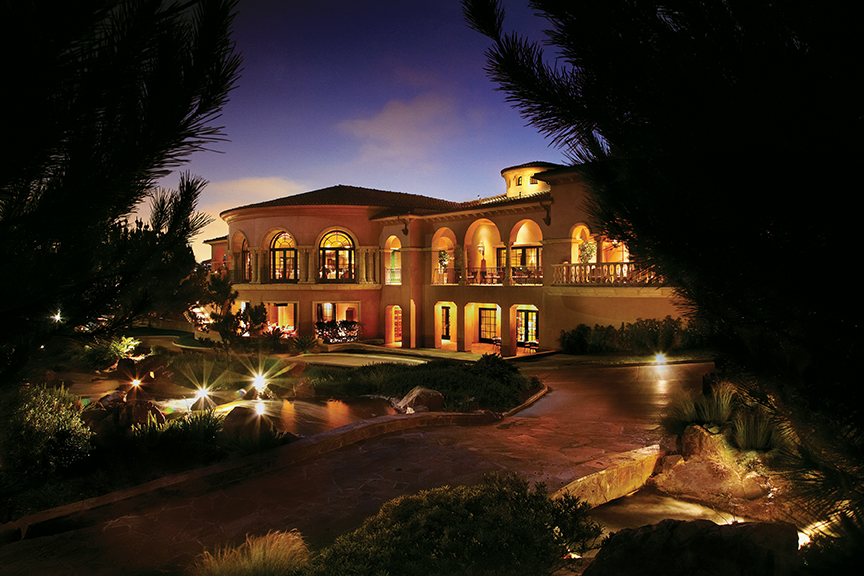
Photos courtesy of Tory Kooyman and Jakob N. Layman
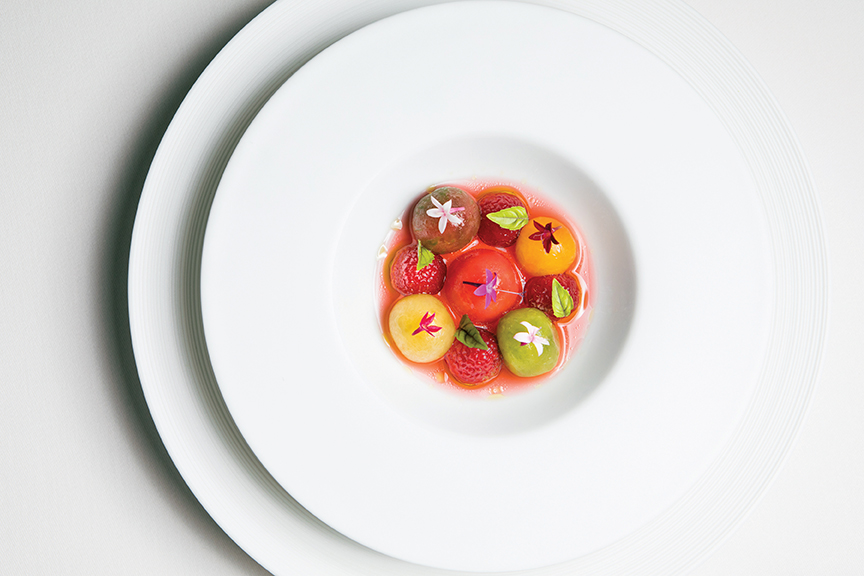
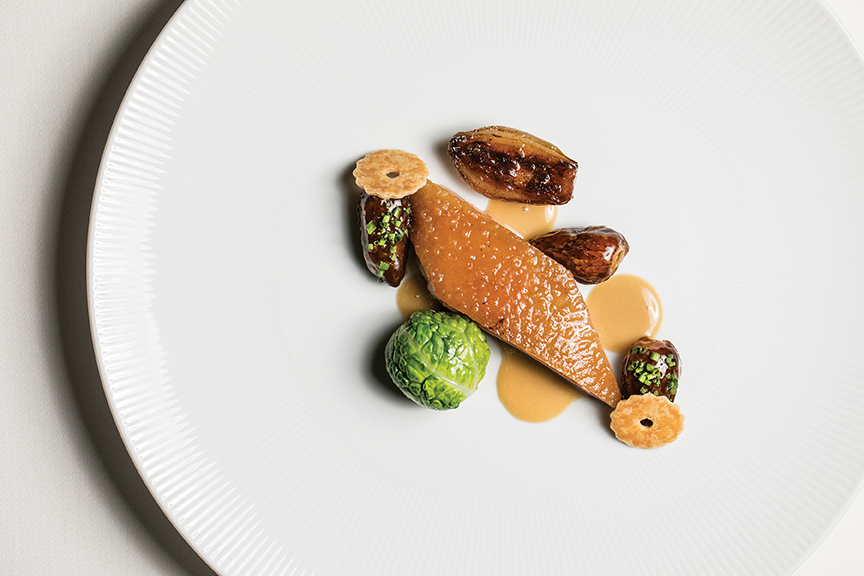
“Hospitality is timeless, as is the desire to be transported,” says Bradley, noting that the dining experience at Addison — it is tucked away in the hills above Del Mar — echoes its physical separation from metropolitan San Diego or L.A. “In an era where we’re so connected to technology, it’s more important than ever to maintain fine dining traditions that separate our guests from the stress of their daily routines,” suggests the chef.
Addison’s bar is currently dispensing a $250 cocktail called the Corpse Reviver XIII, a reimagination of a classic libation with roots in the 19th century. This gold dust-embellished version contains Adrien Camut Rareté (a Calvados so rare only 10 bottles are allocated to the U.S. annually) and 40-year-aged Rémy Martin Louis XIII Cognac. With its price equivalent to the tasting menu, this is clearly an indulgence worth lingering over.
In San Francisco, Saison ranks as the most exclusive and expensive restaurant in town, where exquisitely presented contemporary American fare is served in a space where the boundaries between dining room and kitchen are all but erased. A procession of nearly 20 small courses, which changes daily and can be tailored to the preferences of individual diners, carries a tariff of $398 —before even exploring Saison’s world-class wine list.
In Las Vegas, where winners and losers alike are as predisposed to consume opulent cuisine as they are to purchase Louis Vuitton bags, every major hotel has at least one ultra-high-end dining room. At Caesar’s Palace it is the eponymous restaurant of Guy Savoy, one of Paris’ Michelin three-star stalwarts, where the “Prestige Tasting Menu” runs $385 per person and premium wine pairings add another $375.
At Twist, a celebrated dining venue at the Mandarin Oriental Las Vegas, Chef Pierre Gagnaire (another giant of the Parisian dining scene) presents what may be the luckiest menu on the city’s legendary Strip. A seven-course meal is paired with seven fine wines to comprise a memorable gastronomic experience, and hopefully its $777 per person investment can be recouped with some additional sevens in a nearby casino.
At the Mandalay Bay’s Fleur in Las Vegas, even the ultimate comfort food can inflict extensive damage to one’s budget. There, chef/owner Hubert Keller applies the city’s legendary glam to the humble hamburger, layering foie gras and truffles over a wagyu beef patty. It arrives with a bottle of 1995 Château Pétrus, one of the world’s most treasured wines, followed by a $5,000 tab.
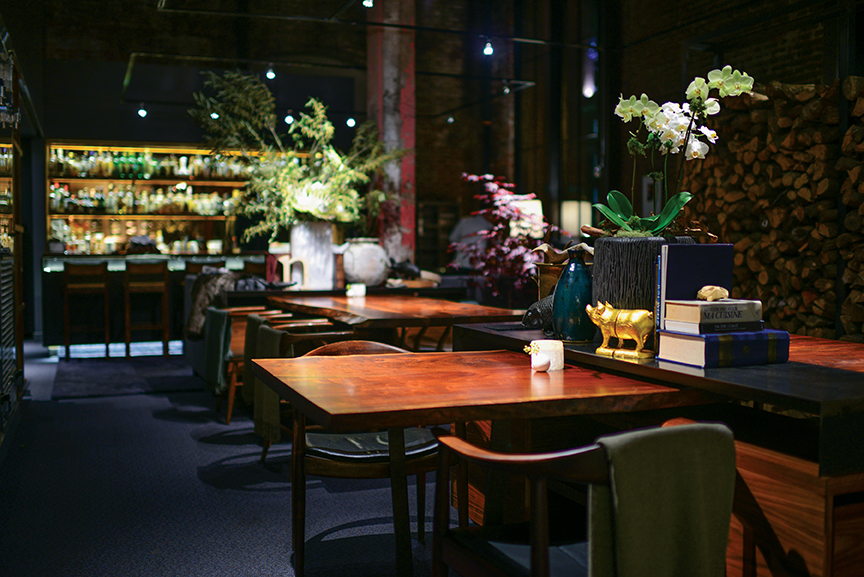
Photos by Bonjwing Lee
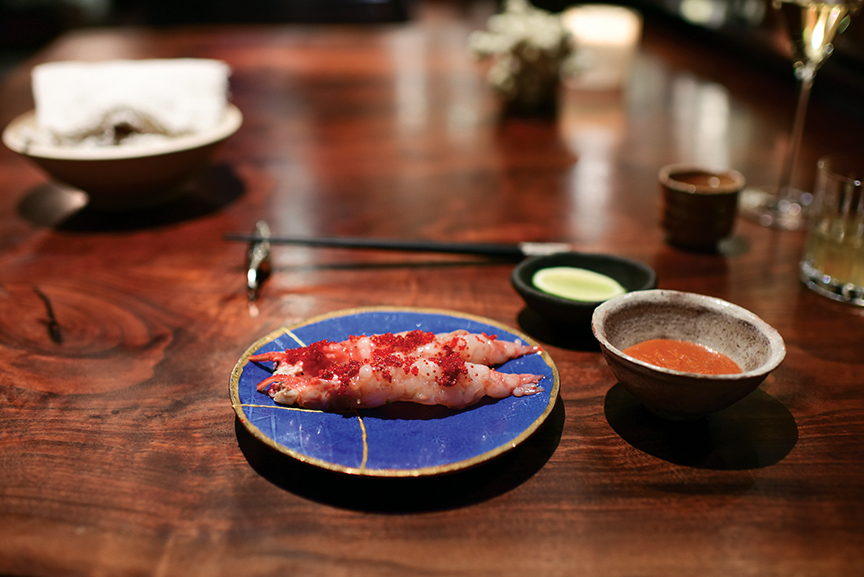
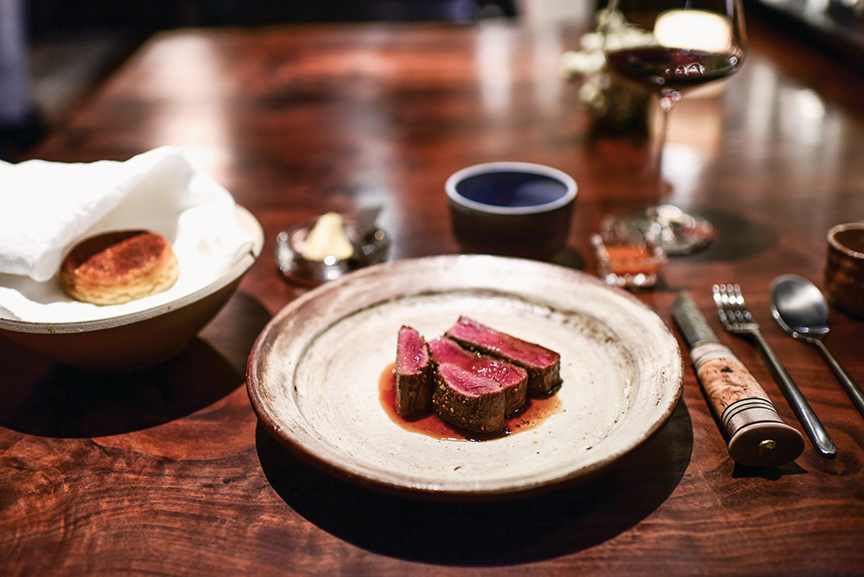
Addison • San Diego • www.addisondelmar.com
Alinea • Chicago • www.alinearestaurant.com
Fleur by Hubert Keller • Las Vegas • www.hubertkeller.com
Restaurant Guy Savoy • Las Vegas • www.caesars.com
Le Bernardin • New York • www.le-bernardin.com
Masa • New York • www.masanyc.com
Saison • San Francisco • www.saisonsf.com
Twist • Las Vegas • www.mandarinoriental.com/las-vegas
Urasawa • Beverly Hills • http://urasawa.cafe-inspector.com
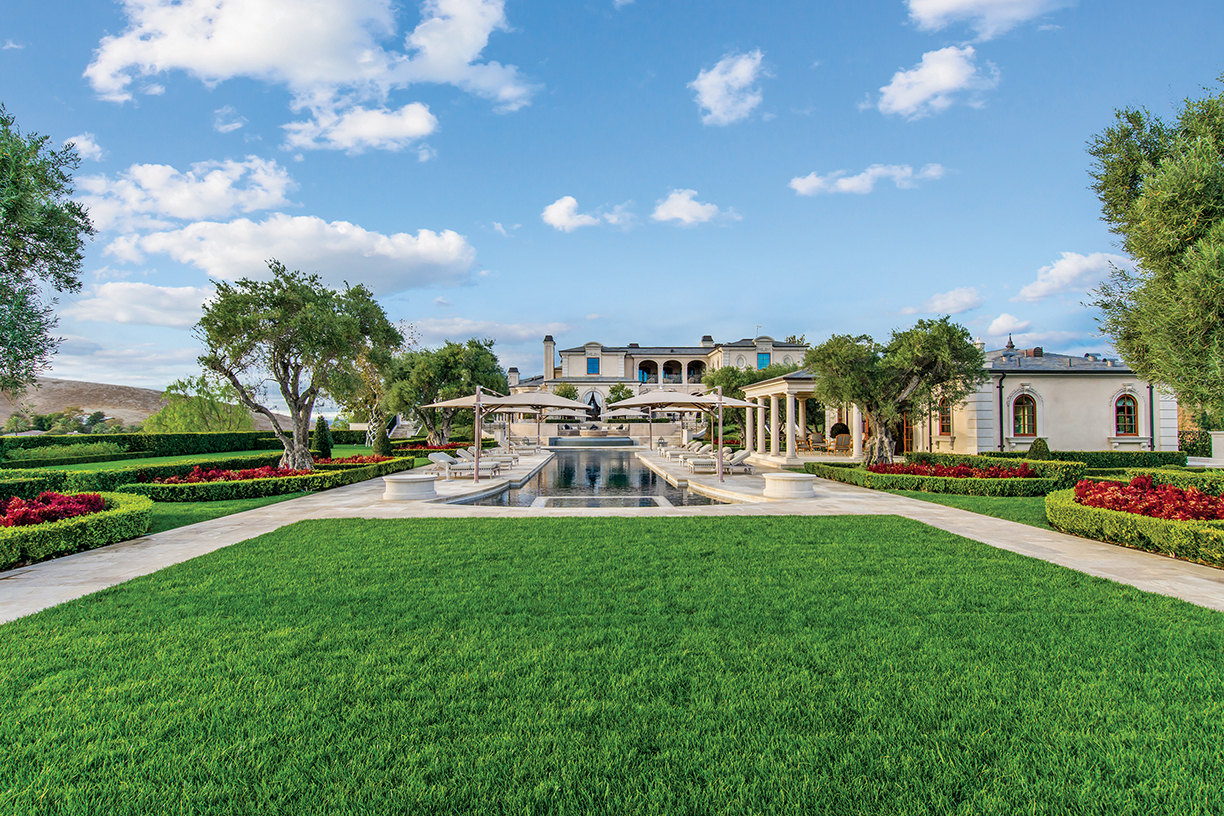
Few estates can be considered a work of art, but arrive at the property featured on our cover and you find it takes a moment to take it all in. Ducks paddle in front of an antique millhouse next to a quarter-acre pond. Vine-covered bridges and stone paths twine among four cascading ponds. The setting is as idyllic as Monet’s gardens that inspired the landscape.
No matter where you are on this property, you are surrounded by beauty, along with blue skies and rolling mountain panoramas that comprise 360-degree views. Finding an estate so meticulously orchestrated is rare; even the hues of the roofs merge into a larger palette.
Inspired by the French Romantic period, the main house was completely reimagined three years ago when additional parcels were also acquired to transform the entire property into an ultra-private, 33-acre compound. Every finish is exquisite, superbly paired with the setting and endowing each space with a vibrant but balanced aesthetic. Even the kitchen, designed to evoke a French bistro and backed by professional chef’s kitchen, reflects the design inspiration, as do the parterre gardens and formal landscaping.
“What is especially remarkable about this property is everything you might not notice initially,” says Jordan Cohen, estate director for RE/MAX Olson and Associates in Westlake Village, who is the No. 1 RE/MAX agent in the U.S. The interplay between buildings and the land is dynamic but subtle. Off to one side lies an organic farm and orchard. From the main house, gardens and one of the two pools stretch out toward distant views. A pool house becomes the setting for an extensive spa including a Himalayan salt room. A second pool is adjacent to the 11,000-square-foot guest house.
Privacy and infrastructure were prime objectives in the creation of this property. The guard-gated entry road is part of the property and completely secure. A sagacious purchase of water rights, almost priceless in California, resulted in two municipal-quality 1,000-foot wells on the property. When viewed from the perspective of art, the $85 million offering price might be considered a bargain for a masterpiece of this magnitude. — Camilla McLaughlin
Photo courtesy of RE/MAX



